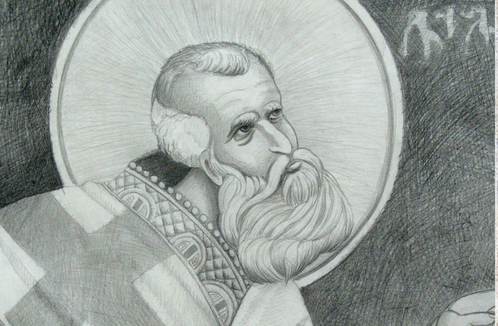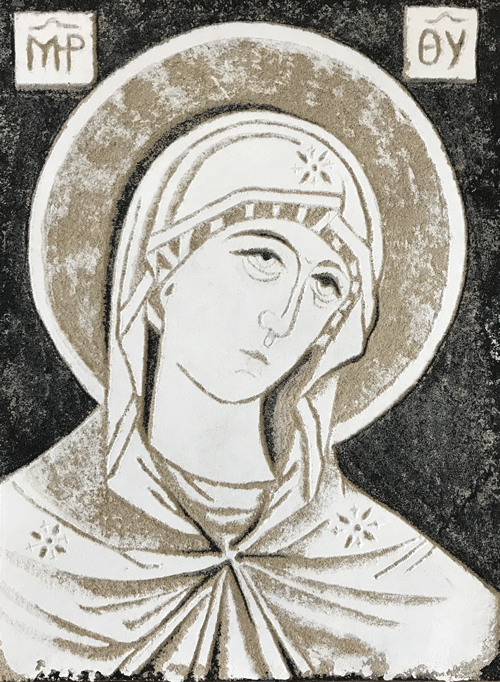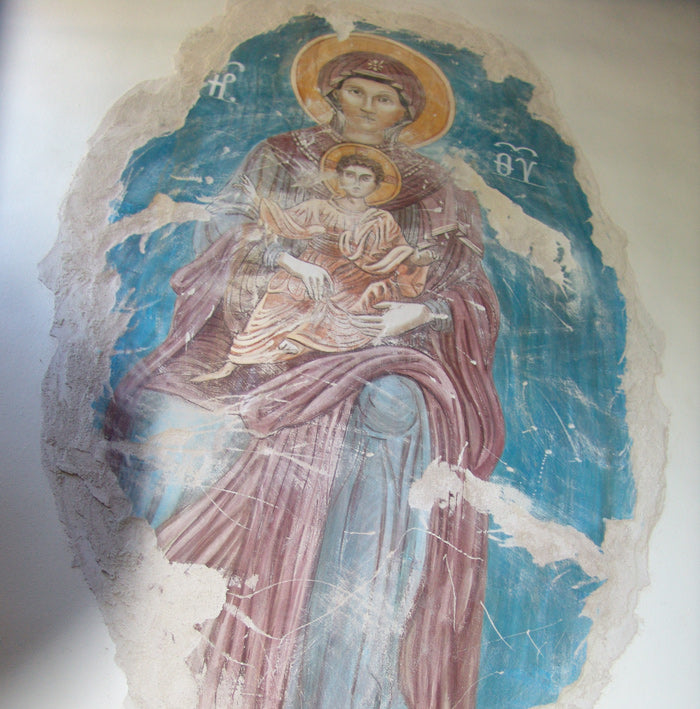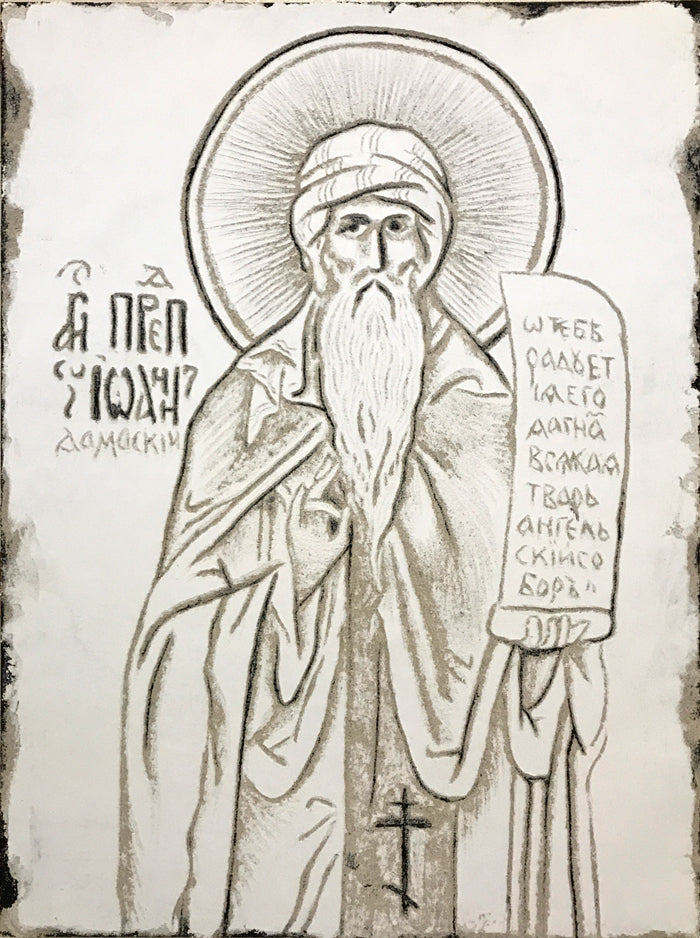Athanasius I of Alexandria (c. 296–298 – 2 May 373), also called Athanasius the Great, Athanasius the Confessor or, primarily in the Coptic Orthodox Church, Athanasius the Apostolic. He was the 20th bishop of Alexandria (as Athanasius I).
His intermittent episcopacy spanned 45 years (c. 8 June 328 – 2 May 373), of which over 17 encompassed five exiles, when he was replaced on the order of four different Roman emperors. Athanasius was a Christian theologian, a Church Father, the chief defender of Trinitarianism against Arianism, and a noted Coptic Christian (Egyptian) leader of the fourth century.
His important works include:
Letters to Serapion (on the Holy Spirit),
and Four Orations (Discourses) Against the Arians.
Athanasius was born to a Christian family in the city of Alexandria[9] or possibly the nearby Nile Delta town of Damanhur sometime between the years 293 and 298. The earlier date is sometimes assigned due to the maturity revealed in his two earliest treatises Contra Gentes (Against the Heathens) and De Incarnatione (On the Incarnation), which were admittedly written about the year 318 before Arianism had begun to make itself felt, as those writings do not show an awareness of Arianism.
O holy father Athanasius,
like a pillar of orthodoxy
you refuted the heretical nonsense of Arius
by insisting that the Father and the Son are equal in essence.
O venerable father, beg Christ our God to save our souls.
In about 319, when Athanasius was a deacon, a presbyter named Arius came into a direct conflict with Alexander of Alexandria. It appears that Arius reproached Alexander for what he felt were misguided or heretical teachings being taught by the bishop.[18] Arius' theological views appear to have been firmly rooted in Alexandrian Christianity.[19] He embraced a subordinationist Christology which taught that Christ was the divine Son (Logos) of God, made, not begotten, heavily influenced by Alexandrian thinkers like Origen,[20] and which was a common Christological view in Alexandria at the time.[21] Arius had support from a powerful bishop named Eusebius of Nicomedia (not to be confused with Eusebius of Caesarea), illustrating how Arius's subordinationist Christology was shared by other Christians in the Empire. Arius was subsequently excommunicated by Alexander, and he would begin to elicit the support of many bishops who agreed with his position.
Athanasius' episcopate began on 9 May 328 as the Alexandrian Council elected Athanasius to succeed after the death of Alexander, and was consecrated in A.D. 326. Patriarch Athanasius spent over 17 years in five exiles ordered by four different Roman Emperors, not counting approximately six more incidents in which Athanasius fled Alexandria to escape people seeking to take his life.
First exile
Athanasius' first problem lay with Meletius of Lycopolis and his followers, who had failed to abide by the First Council of Nicaea. That council also anathematized Arius. Accused of mistreating Arians and Meletians, Athanasius answered those charges at a gathering of bishops in Tyre, the First Synod of Tyre, in 335. There, Eusebius of Nicomedia and other supporters of Arius deposed Athanasius.
Second exile
When Emperor Constantine I died, Athanasius was allowed to return to his See of Alexandria. Shortly thereafter, however, Constantine's son, the new Roman Emperor Constantius II, renewed the order for Athanasius's banishment in 338. 'Within a few weeks he set out for Rome to lay his case before the Church at large. He had made his appeal to Pope Julius, who took up his cause with whole-heartedness that never wavered down to the day of that holy pontiff's death.
Third exile
Athanasius at the Council of Nicea, William of Tyre manuscripts.
Through the influence of the Eusebian faction at Constantinople, an Arian bishop, George of Cappadocia, was now appointed to rule the see of Alexandria. Athanasius, after remaining some days in the neighborhood of the city, finally withdrew into the desert of Upper Egypt, where he remained for a period of six years, living the life of the monks, devoting himself to the composition of a group of writings; "Apology to Constantius", the "Apology for his Flight", the "Letter to the Monks", and the "History of the Arians".
Fourth exile
In 362, the new Emperor Julian, noted for his opposition to Christianity, ordered Athanasius to leave Alexandria once again. Athanasius left for Upper Egypt, remaining there with the Desert Fathers until Julian's death on 26 June 363. Athanasius returned in secret to Alexandria, where he soon received a document from the new emperor, Jovian, reinstating him once more in his episcopal functions.
Fifth exile
Two years later, the Emperor Valens, who favoured the Arian position, in his turn exiled Athanasius. This time Athanasius simply left for the outskirts of Alexandria, where he stayed for only a few months before the local authorities convinced Valens to retract his order of exile.[16] Some early reports state that Athanasius spent this period of exile at his family's ancestral tomb[15] in a Christian cemetery. It was during this period, the final exile, that he is said to have spent four months in hiding in his father's tomb.
Final years and death
After returning to Alexandria in early 366, Athanasius spent his final years repairing all the damage done during the earlier years of violence, dissent, and exile. He resumed writing and preaching undisturbed, and characteristically re-emphasized the view of the Incarnation which had been defined at Nicaea. On 2 May 373, having consecrated Peter II, one of his presbyters as his successor, Athanasius died peacefully in his own bed, surrounded by his clergy and faithful supporters.
Athanasius was originally buried in Alexandria, Egypt, but his remains were later transferred to the Chiesa di San Zaccaria in Venice, Italy. During Pope Shenouda III's visit to Rome (4–10 May 1973), Pope Paul VI gave the Coptic Patriarch a relic of Athanasius, which he brought back to Egypt on 15 May. The relic is currently preserved under the new Saint Mark's Coptic Orthodox Cathedral in Cairo, Egypt. However, the majority of Athanasius's corpse remains in the Venetian church.
All major Christian denominations which officially recognize saints venerate Athanasius. Western Christians observe his feast day on 2 May, the anniversary of his death. The Catholic Church considers Athanasius a Doctor of the Church. For Coptic Christians, his feast day is Pashons 7 (now circa 15 May). Eastern Orthodox liturgical calendars remember Athanasius on 18 January.




